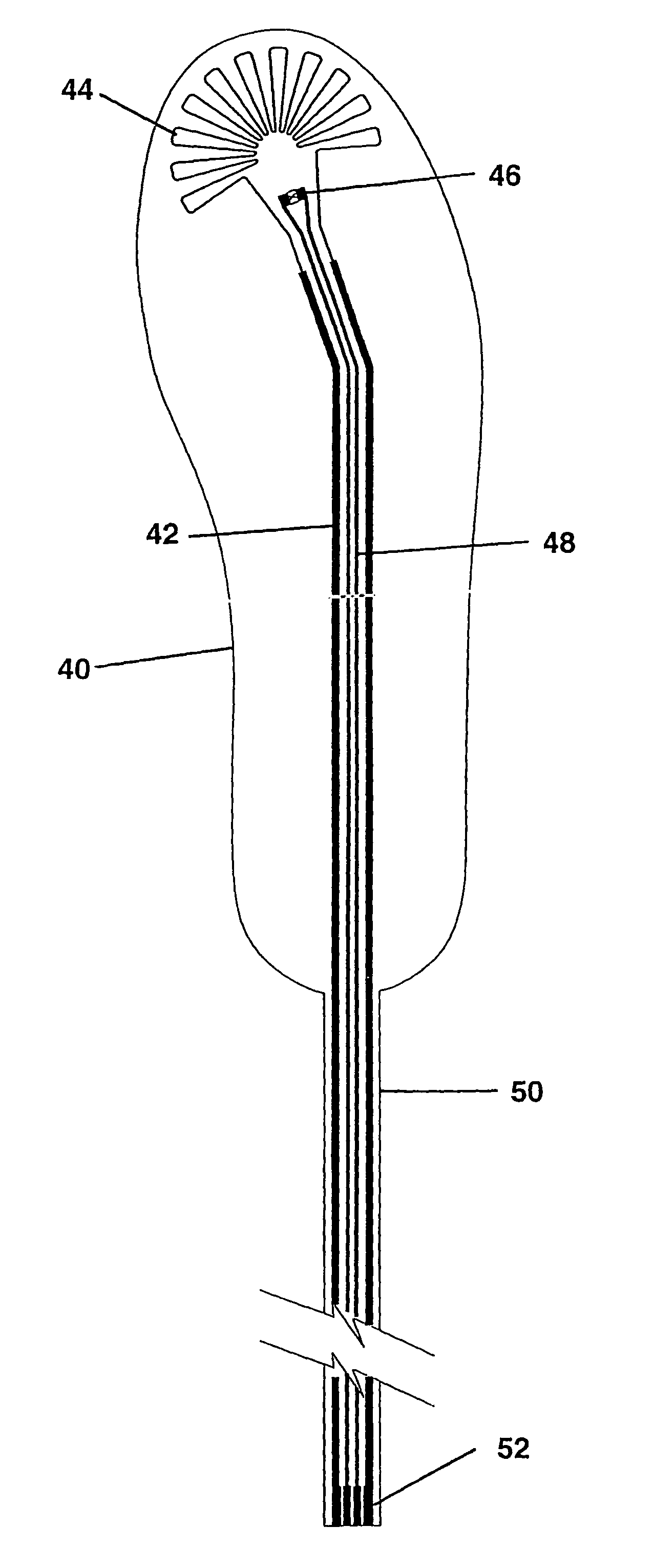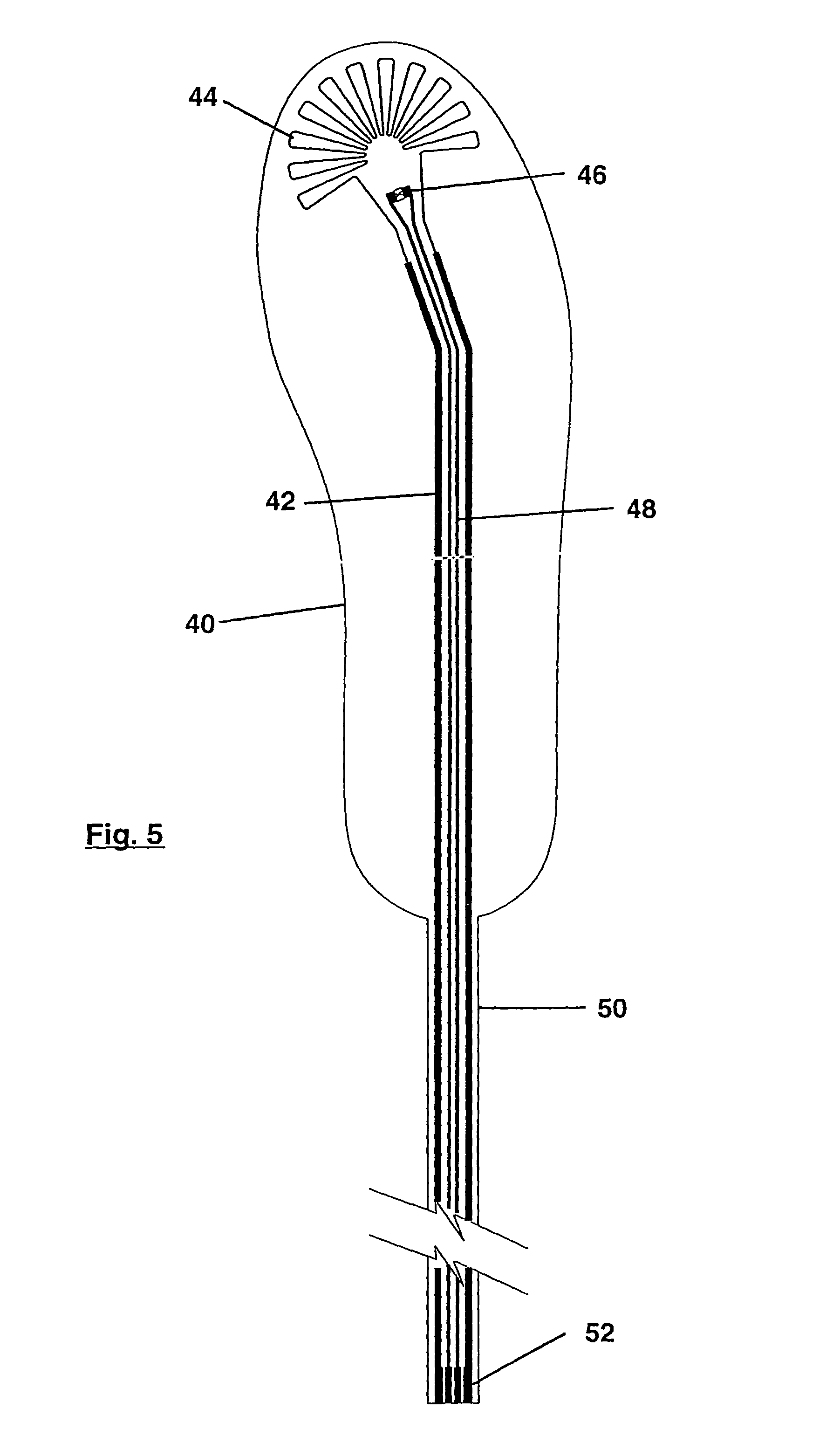Heater element for the inner sole of a footwear
a heater element and inner sole technology, applied in the field of insole heater elements, can solve the problems of lack of breathability, high manufacturing complexity and hence cost, and limited knowledge of heater elements for such applications, and achieve the effect of facilitating the circulation of released functional chemicals and the breathability of fabric heaters
- Summary
- Abstract
- Description
- Claims
- Application Information
AI Technical Summary
Benefits of technology
Problems solved by technology
Method used
Image
Examples
Embodiment Construction
[0034]FIG. 1 shows a plan view of a metallised fabric heater element 12 according to an embodiment of the invention. The heater element is formed by taking a nickel coated polyester woven fabric and cutting it to the shape of an insole, as shown in FIG. 1. This cutting operation may be performed before or after (preferably after) the etching of the track pattern (described below). A suitable material is the commercially available metallised fabric Metalester (Registered Trade Mark), a woven electroless nickel plated polyester mesh. Such fabrics are available with a variety of thread thicknesses, thread spacings, type of weave and weight of nickel. Threads may typically have a diameter within the range 24 to 600 micrometers (microns), a thread count of between 4 and 737 per cm, and a metal coating of varying weight per square meter.
[0035]Suitable fabrics may be coated with a continuous layer of metal after manufacture, for example by sputtering, by chemical reduction or by electro-de...
PUM
 Login to View More
Login to View More Abstract
Description
Claims
Application Information
 Login to View More
Login to View More - R&D
- Intellectual Property
- Life Sciences
- Materials
- Tech Scout
- Unparalleled Data Quality
- Higher Quality Content
- 60% Fewer Hallucinations
Browse by: Latest US Patents, China's latest patents, Technical Efficacy Thesaurus, Application Domain, Technology Topic, Popular Technical Reports.
© 2025 PatSnap. All rights reserved.Legal|Privacy policy|Modern Slavery Act Transparency Statement|Sitemap|About US| Contact US: help@patsnap.com



